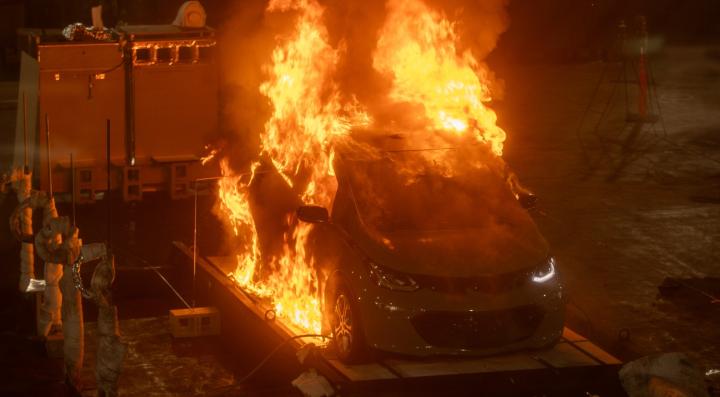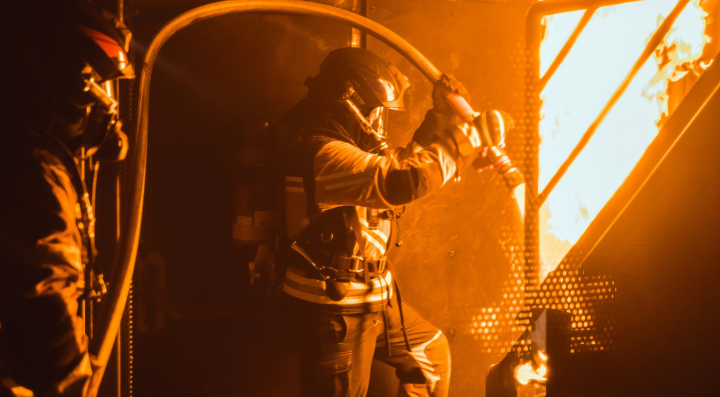
Emerging Issues Related to Personal Protective Equipment

- Overview
- Updates
- Resources
The Fire Safety Research Institute (FSRI), part of UL Research Institutes, seeks to investigate emerging issues related to firefighter personal protective equipment (PPE). This project addresses the evolving challenges that firefighters face, particularly in relation to chemical and thermal hazards.
Understanding the Tradeoffs Associated with PPE Technology Advancements
There has been substantial research to understand the chemical and thermal environment of the fireground. Knowledge of the thermal environment firefighters operate in has driven advancements in turnout gear and in the facepiece of their self-contained breathing apparatus (SCBA). Following research characterizing the chemical environment, occupational exposure as a firefighter was officially recognized as carcinogenic in 2022. In response to this knowledge, PPE technology has advanced to better protect firefighters against these exposure risks. These advancements are often aimed at shielding firefighters from burn injuries or improving chemical protection.
However, these developments in protective properties come with tradeoffs. For example, turnout gear providing better protection against chemicals may lack breathability and lead to heat stress. In addition, if firefighters’ turnout gear protects them from hotter conditions, they may end up operating in environments that exceed the heat tolerance of their SCBA facepiece. Firefighters deserve assurance that their gear can handle the heat, chemicals, and other evolving hazards they encounter on the job.
Evaluating PPE Technology Advancements
This project aims to understand the benefits and limitations associated with advancements in PPE technology. More specifically, it seeks to:
- further characterize the chemical and thermal hazards that firefighters face;
- evaluate how well PPE performs under fireground conditions and against emerging hazards like lithium-ion batteries;
- quantify PPE contamination and examine the best methods to clean and return it to service; and
- explore other benefits and potential drawbacks of recent advancements in PPE.
The project is comprised of four experimental stages to meet these objectives:
- Electric vehicle (EV) fire contamination: Expose turnout gear swatches to EV fires and characterize the chemical contamination of the swatches.
- Traditional fuel-based vehicle fire contamination: Expose PPE swatches to a traditional fuel-based vehicle fire and characterize the resulting chemical contamination.
- Laundering and cleaning effectiveness for EV fire contamination: Assess the effectiveness of various cleaning techniques (e.g., traditional laundering versus liquid CO₂ cleaning) on the contaminated PPE swatches from the EV fire experiment.
- Laundering and cleaning effectiveness for traditional vehicle fire contamination: Evaluate the effectiveness of different laundering and cleaning techniques on the contaminated turnout gear swatches from the fuel-based vehicle fire experiment.
The findings of this project aid the fire service in making informed decisions on PPE selection that best suits their needs, and implementing cleaning protocols for optimal performance. Findings also shape design and performance requirements that support further advancements in PPE.
This project builds on FSRI’s previous research on PPE, including the impact of PPE laundering and hood design and critical health issues faced by the fire service.
Published: August 9, 2024





